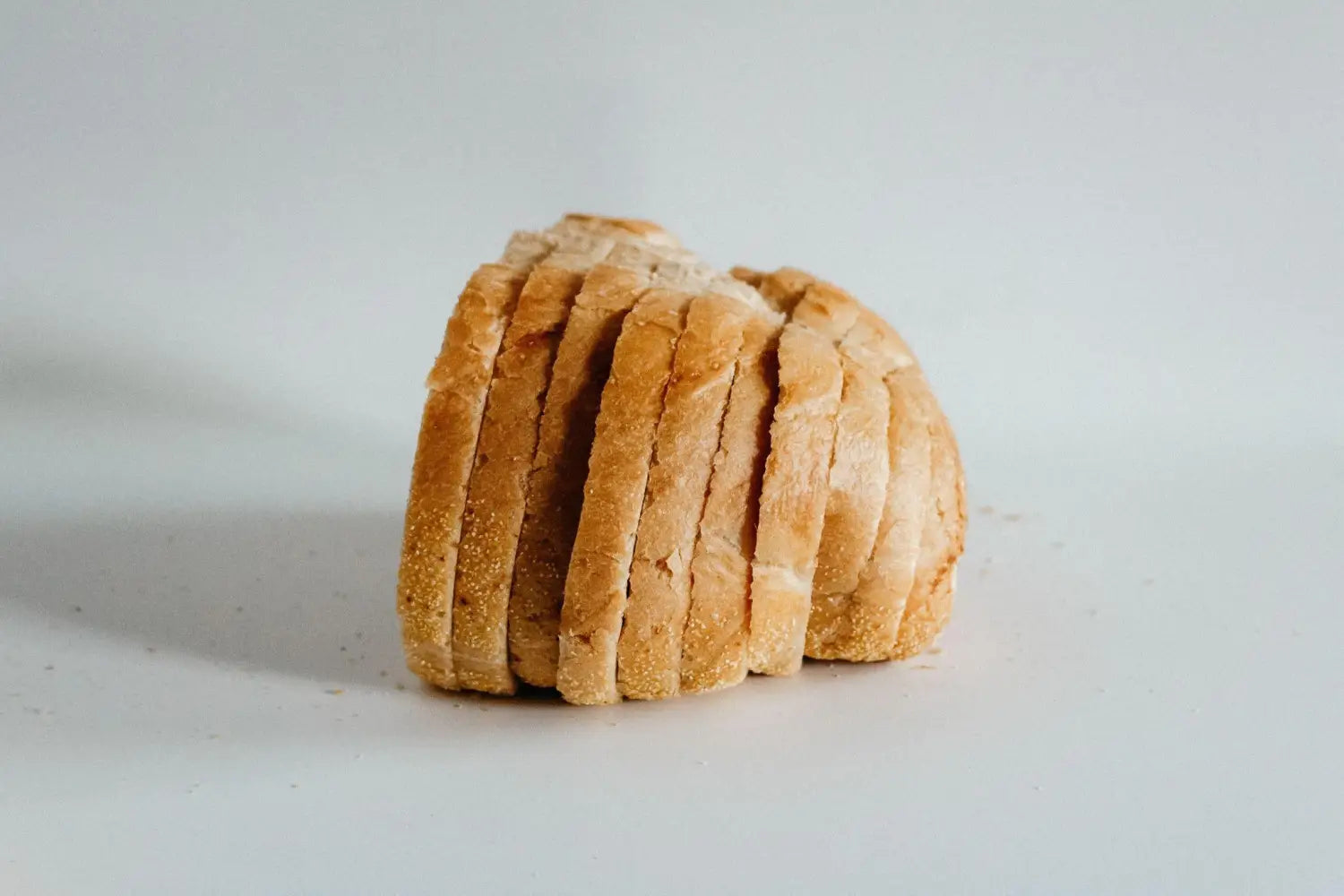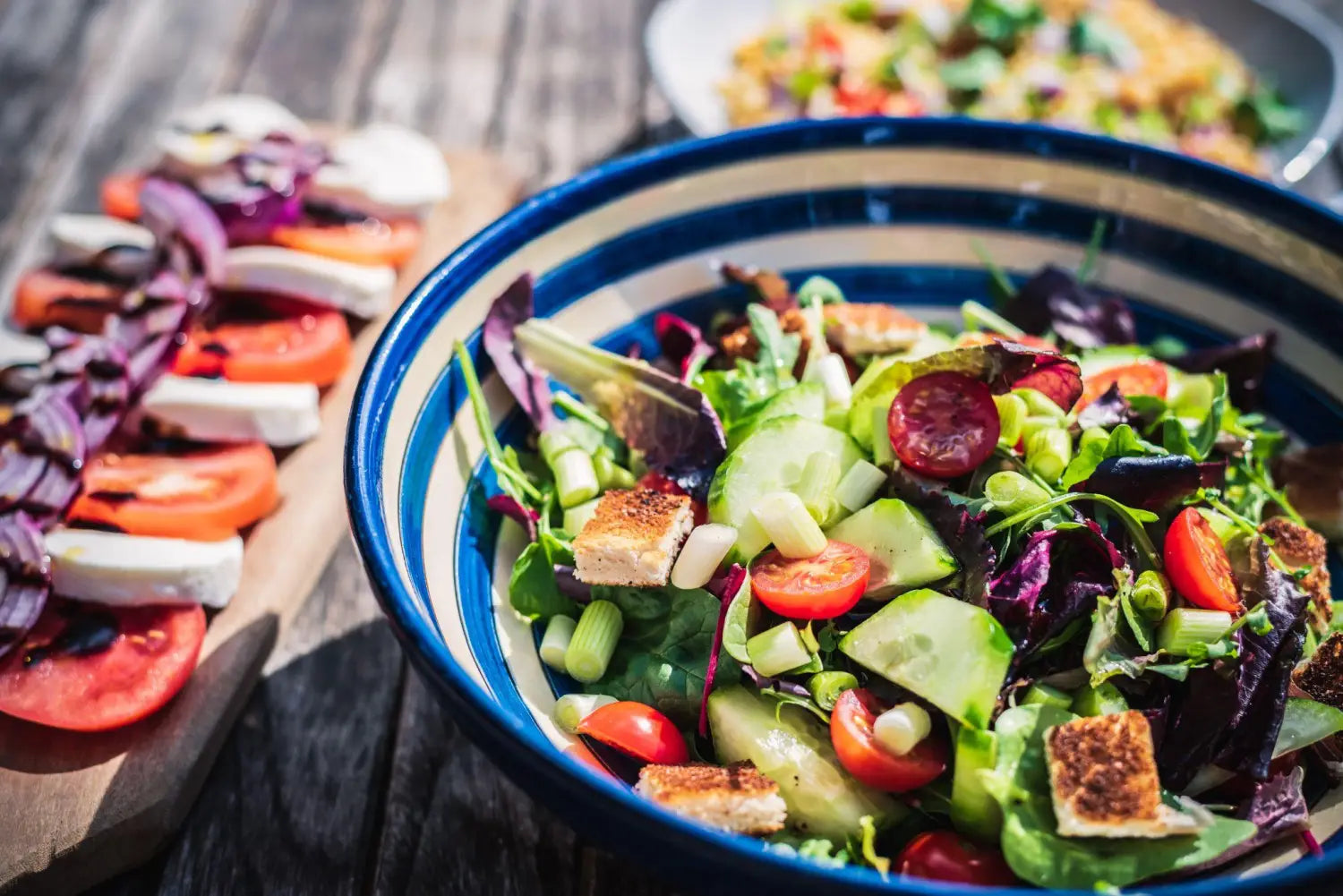
CARBOHYDRATES - Good or Bad for You? Find out
You hear “I don’t eat carbs” a lot more often now than you would have done 20 years ago. Many people believe it is the best or only way to burn fat. If you aren’t eating carbs, you must be burning fat for energy instead, right? Not necessarily.
BM19 may help your body deal with ravenous hunger, overweight, and unnecessary fat around the belly and other body parts.
When you limit carbohydrates, however, you deprive your body of a main source of fuel — and many essential nutrients that you need to stay healthy.
Carbs (carbohydrates) are a hot topic right now, but they are sorely misunderstood, with a lot of confusion surrounding when and if to eat them.
Here we’re going to look at the pros and cons of limiting carbs. We’ll also explore which carbs might be best for you, when to consume them and how to use them to accelerate your results.

What are carbohydrates?
Carbohydrates are a collection of carbon, hydrogen, and oxygen molecules. Because of their similar structure, sugars, starches, and fibers all fall into this macronutrient category.
They are split into three groups based on how complex their structure is. Monosaccharides are the simplest, followed by oligosaccharides and finally polysaccharides.
The more complex the carbohydrate, the slower it will be broken down by your digestive system. Regardless of the speed of digestion, however, they will all eventually be broken down into glucose – the simplest form of carbohydrate. These can be bound together to form glycogen molecules which are primarily stored in muscle tissue and in the liver.
BM164 may help your body deal with polyuria (frequent urination), urinary tract infections, bladder conditions, interstitial cystitis, prostate (enlarged prostate), chronic renal failure, and hypercalcemia.
How does your body use carbs?
One of the primary functions of carbohydrates is to provide your body with energy.
Most of the carbohydrates in the foods you eat are digested and broken down into glucose before entering the bloodstream.
Glucose in the blood is taken up into your body’s cells and used to produce a fuel molecule called adenosine triphosphate (ATP) through a series of complex processes known as cellular respiration. Cells can then use ATP to power a variety of metabolic tasks.
Most cells in the body can produce ATP from several sources, including dietary carbohydrates and fats. But if you are consuming a diet with a mix of these nutrients, most of your body’s cells will prefer to use carbs as their primary energy source.

They Also Provide Stored Energy
If your body has enough glucose to fulfill its current needs, excess glucose can be stored for later use.
This stored form of glucose is called glycogen and is primarily found in the liver and muscle.
The liver contains approximately 100 grams of glycogen. These stored glucose molecules can be released into the blood to provide energy throughout the body and help maintain normal blood sugar levels between meals.
Unlike liver glycogen, the glycogen in your muscles can only be used by muscle cells. It is vital for use during long periods of high-intensity exercise. Muscle glycogen content varies from person to person, but it’s approximately 500 grams.
In circumstances in which you have all of the glucose your body needs and your glycogen stores are full, your body can convert excess carbohydrates into triglyceride molecules and store them as fat.
BM73 may help with poor blood flow, including a crackling or rubbing sensation under the skin, severe pain and swelling at the site of injury, numbness at the site of infection, and discoloration of the skin; promotes healthy blood flow.
-
Carbohydrates Help Preserve Muscle
-
They Promote Digestive Health
-
They Influence Heart Health and Diabetes
Whole’ vs. ‘Refined’ Carbs
Not all carbs are created equal.
There are many different types of carbohydrate-containing foods, and they can vary in their health effects.
Carbs are sometimes referred to as “simple” versus “complex, or “whole” versus “refined.”
Whole carbs are unprocessed and contain the fiber found naturally in the food, while refined carbs have been processed and had the natural fiber removed or changed.
Examples of whole carbs include:
-
vegetables
-
quinoa
-
barley
-
legumes
-
potatoes
-
whole grains
On the other hand, refined carbs include:
-
sugar-sweetened beverages
-
white bread
-
pastries
-
other items made with white flour
Numerous studies show that refined carbohydrate consumption is associated with health conditions like obesity and type 2 diabetes.
Refined carbohydrates tend to cause spikes in blood sugar levels, which leads to a subsequent crash that can trigger hunger and lead to food cravings.
They’re usually also lacking in essential nutrients. In other words, they’re “empty” calories.
There are also added sugars, which should be limited as they’re linked to all sorts of chronic diseases.
However, all carbohydrate-containing foods shouldn’t be demonized because of the negative health effects of processed items.
Whole food sources of carbohydrates are loaded with nutrients and fiber and don’t cause the same spikes and dips in blood sugar levels.
Numerous studies on high fiber carbohydrates, including vegetables, fruits, legumes, and whole grains, show that eating them is linked to improved metabolic health and a lower risk of disease.

Good carbs vs. bad carbs
Carbohydrates are found in foods you know are good for you (vegetables) and ones you know are not (doughnuts). This has led to the idea that some carbs are "good" and some are "bad." According to Healthy Geezer Fred Cicetti, carbs commonly considered bad include pastries, sodas, highly processed foods, white rice, white bread, and other white-flour foods. These are foods with simple carbs. Bad carbs rarely have any nutritional value.
Carbs usually considered good are complex carbs, such as whole grains, fruits, vegetables, beans, and legumes. These are not only processed more slowly, but they also contain a bounty of other nutrients.
Good carbs are:
-
Low or moderate in calories
-
High in nutrients
-
Devoid of refined sugars and refined grains
-
High in naturally occurring fiber
-
Low in sodium
-
Low in saturated fat
-
Very low in, or devoid of, cholesterol and trans fats
Bad carbs are:
-
High in calories
-
Full of refined sugars, like corn syrup, white sugar, honey, and fruit juices
-
High in refined grains like white flour
-
Low in many nutrients
-
Low in fiber
-
High in sodium
-
Sometimes high in saturated fat
-
Sometimes high in cholesterol and trans fats
BM135 is best used for issues related to high cholesterol, including deposits of excess fatty substance that collect in the skin or eyelid tissues and nodules in tendons, hands, or feet.
What is the Glycemic index?
Recently, nutritionists have said that it's not the type of carbohydrate, but rather the carb's glycemic index that's important. The glycemic index measures how quickly and how much a carbohydrate raises blood sugar.
High-glycemic foods like pastries raise blood sugar highly and rapidly; low-glycemic foods raise it gently and to a lesser degree. Some research has linked high-glycemic foods with diabetes, obesity, heart disease, and certain cancers, according to Harvard Medical School.
Purpose
The purpose of a glycemic index (GI) diet is to eat carbohydrate-containing foods that are less likely to cause large increases in blood sugar levels. The diet could be a means to lose weight and prevent chronic diseases related to obesity such as diabetes and cardiovascular disease.
Why you might follow the GI diet
You might choose to follow the GI diet because you:
-
Want to lose weight or maintain a healthy weight
-
Need help planning and eating healthier meals
-
Need help maintaining blood sugar levels as part of a diabetes treatment plan
Studies suggest that a GI diet can help achieve these goals. However, you might be able to achieve the same health benefits by eating a healthy diet, maintaining a healthy weight, and getting enough exercise.
Check with your doctor or health care provider before starting any weight-loss diet, especially if you have any health conditions, including diabetes.

Low glycemic diet
A healthy, low glycemic diet should comprise mostly low GI foods, such as:
-
Fruits: apples, berries, oranges, lemons, limes, grapefruit
-
Non-starchy vegetables: broccoli, cauliflower, carrots, spinach, tomatoes
-
Whole grains: quinoa, couscous, barley, buckwheat, farro, oats
-
Legumes: lentils, black beans, chickpeas, kidney beans
Foods without a GI value or with a very low GI can also be enjoyed as part of a balanced low glycemic diet. They include:
-
Meat: beef, bison, lamb, pork
-
Seafood: tuna, salmon, shrimp, mackerel, anchovies, sardines
-
Poultry: chicken, turkey, duck, goose
-
Oils: olive oil, coconut oil, avocado oil, vegetable oil
-
Nuts: almonds, macadamia nuts, walnuts, pistachios
-
Seeds: chia seeds, sesame seeds, hemp seeds, flax seeds
-
Herbs and spices: turmeric, black pepper, cumin, dill, basil, rosemary, cinnamon
Although no foods are strictly off-limits on the diet, foods with a high GI should be limited.
Foods with a high GI include:
-
Bread: white bread, bagels, naan, pita bread
-
Rice: white rice, jasmine rice, arborio rice
-
Cereals: instant oats, breakfast cereals
-
Pasta and noodles: lasagna, spaghetti, ravioli, macaroni, fettuccine
-
Starchy vegetables: mashed potatoes, potatoes, french fries
-
Baked goods: cake, doughnuts, cookies, croissants, muffins
-
Snacks: chocolate, crackers, microwave popcorn, chips, pretzels
-
Sugar-sweetened beverages: soda, fruit juice, sports drinks
Ideally, try to replace these foods with foods that have a lower GI whenever possible.

Keto diet
The ketogenic diet (or keto diet, for short) is a low-carb, high-fat diet that offers many health benefits.
In fact, many studies show that this type of diet can help you lose weight and improve your health.
Ketogenic diets may even have benefits against diabetes, cancer, epilepsy, and Alzheimer’s disease.
Keto basics
The ketogenic diet is a very low carb, high fat diet that shares many similarities with the Atkins and low carb diets.
It involves drastically reducing carbohydrate intake and replacing it with fat. This reduction in carbs puts your body into a metabolic state called ketosis.
When this happens, your body becomes incredibly efficient at burning fat for energy. It also turns fat into ketones in the liver, which can supply energy for the brain.
Ketogenic diets can cause significant reductions in blood sugar and insulin levels. This, along with the increased ketones, has some health benefits.
BIO28 is best used for colds, headaches, and nervous tension. This combination of all twelve cell salts may restore energy and wellness. Also, it may promote the health of your immune system by providing your cells with the needed mineral supplements.
Pros of avoiding carbs
1. Reduced cravings
2. Insulin resistance leads to fat gain
3. Fewer carbs favors nutrients
4. Low carb breakfast aids fat loss
Cons of avoiding carbs
1. Reduced training intensity
2. Muscle loss
3. Sleep suffers
4. Metabolism may suffer
How to Make the Right Choices
As a general rule, carbohydrates in their natural, fiber-rich form are healthy, while those stripped of their fiber are not.
If it’s a whole, single-ingredient food, then it’s probably a healthy food for most people, no matter what the carbohydrate content is.
Instead of thinking of carbs as either “good” or “bad,” focus on increasing whole and complex options over those that are processed.
Things are rarely ever black and white in nutrition. But the following foods are a better source of carbs.
-
All of them. It’s best to eat a variety of vegetables every day.
-
Whole fruits. Apples, bananas, strawberries, etc.
-
Lentils, kidney beans, peas, etc.
-
Almonds, walnuts, hazelnuts, macadamia nuts, peanuts, etc.
-
Chia seeds and pumpkin seeds.
-
Whole grains. Choose grains that are truly whole, as in pure oats, quinoa, brown rice, etc.
-
Potatoes, sweet potatoes, etc.
These foods may be acceptable in moderation for some people, but many will do their best by avoiding them as much as possible.
-
Sugary drinks. These are sodas, fruit juices with added sugar, and beverages sweetened with high fructose corn syrup.
-
White bread. These are refined carbohydrates that are low in essential nutrients and have a negative effect on metabolic health. This applies to most commercially available bread.
-
Pastries, cookies, and cakes. These foods tend to be very high in sugar and refined wheat.
-
Ice cream. Most types of ice cream are very high in sugar, although there are exceptions.
-
Candies and chocolates. If you’re going to eat chocolate, choose quality dark chocolate.
French fries and potato chips. Whole potatoes are healthy. However, french fries and potato chips don’t provide the nutritional benefits that whole potatoes do.

Low Carb Is Great for Some, But Others Function Best with Plenty of Carbs
There is no one-size-fits-all solution in nutrition.
The “optimal” carbohydrate intake depends on numerous factors, such as:
-
age
-
gender
-
metabolic health
-
physical activity
-
food culture
-
personal preference
If you’re overweight or have medical conditions such as metabolic syndrome and/or type 2 diabetes, you may be carbohydrate sensitive.
In this case, reducing carbohydrate intake is likely beneficial.
On the other hand, if you’re just trying to stay healthy, there’s probably no reason for you to avoid “carbs.” However, it’s still important to eat whole, single-ingredient foods as much as possible.
If your body type is naturally lean and/or you’re highly physically active, you may even function much better with plenty of carbs in your diet.
For more information about the number of carbs that’s right for you, talk with your healthcare provider.
BM247 provides support for metabolic function. Work as an appetite suppressant that may help with weight loss. Best used for hunger control for food and sugar cravings.
The Bottom Line
Carbohydrates serve several key functions in your body.
They provide you with energy for daily tasks and are the primary fuel source for your brain’s high energy demands.
Fiber is a special type of carb that helps promote good digestive health and may lower your risk of heart disease and diabetes.
In general, carbs perform these functions in most people. However, if you are following a low-carb diet or food is scarce, your body will use alternative methods to produce energy and fuel your brain.









Dejar un comentario